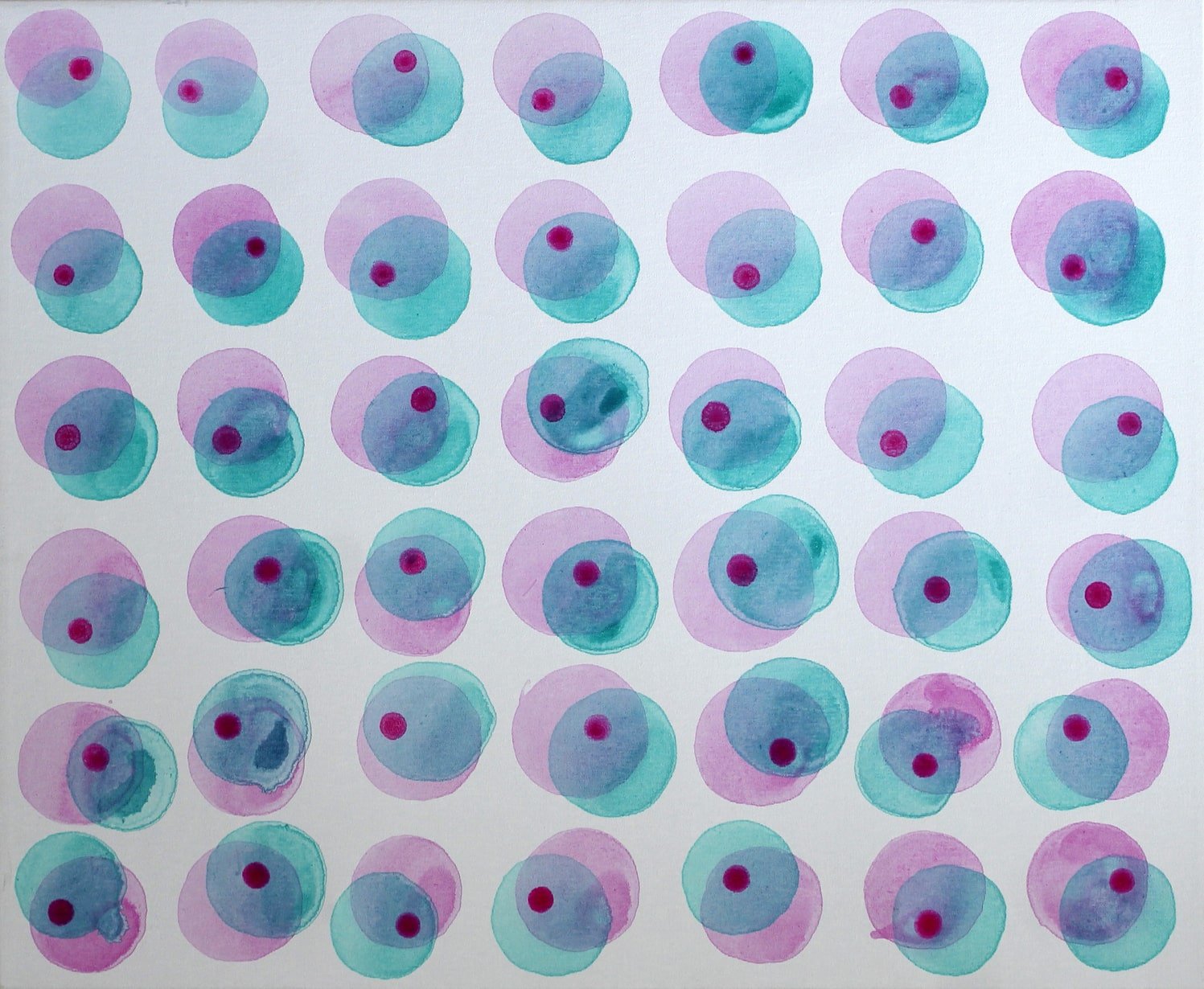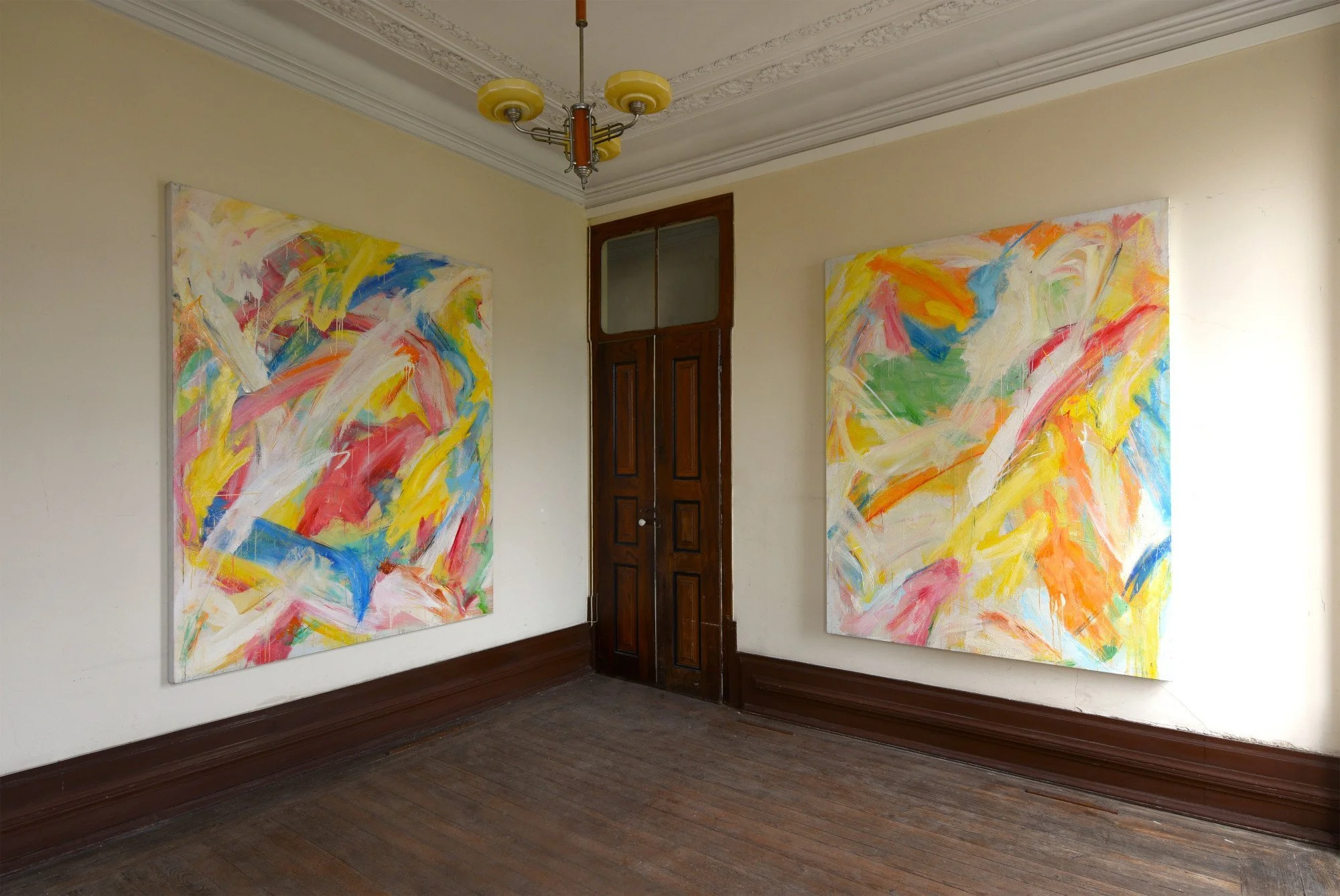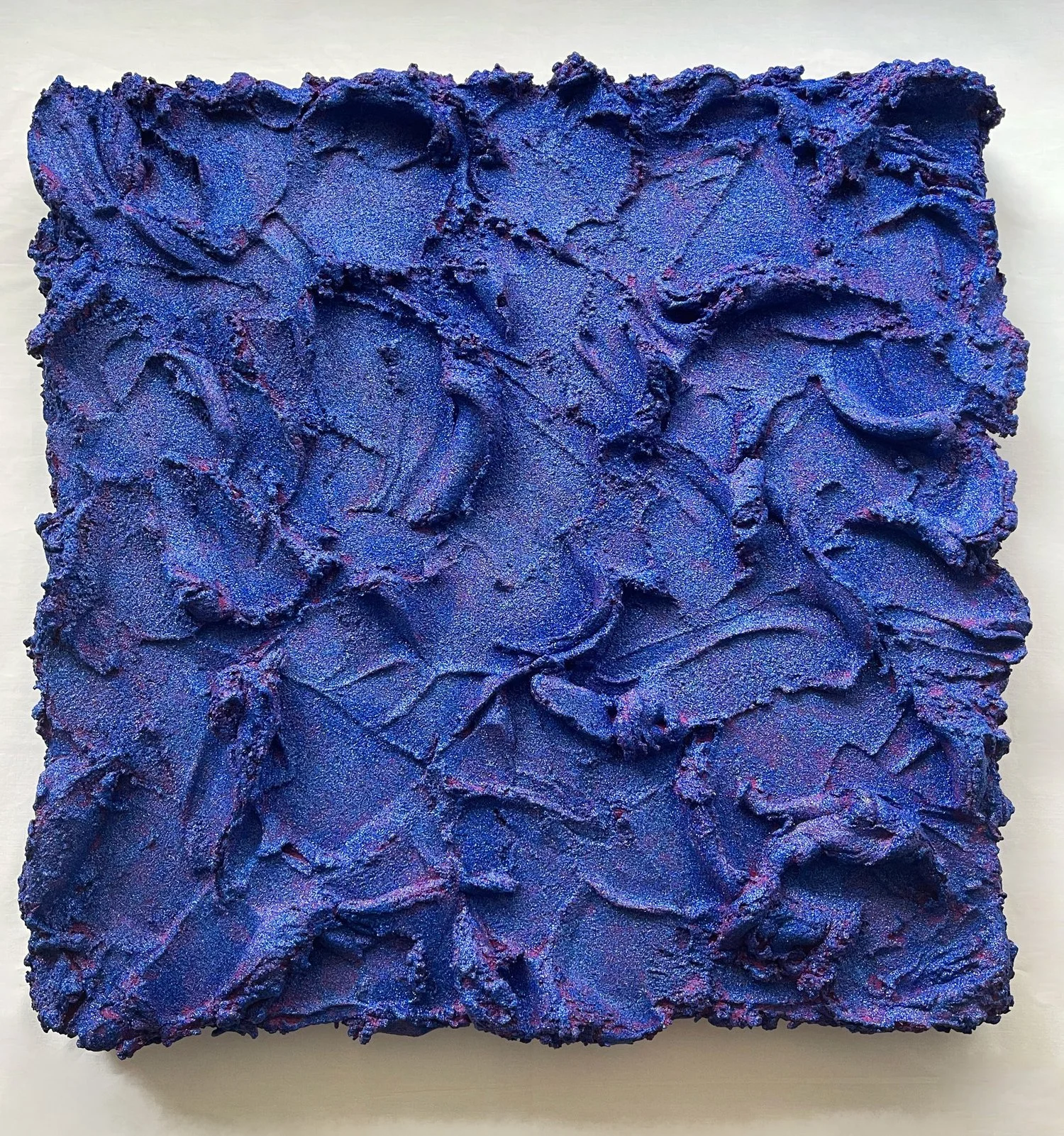10 Questions with Alan Lacke
Graduated in Graphic Arts at the National Polygraphic Center in Havana, he complements his plastic arts studies in the studio of the Cuban painter Ernesto García Peña and the studio of the sculptor Eduardo Díaz Piñeiro in Havana. Since 2015, he has been developing his constant work as a plastic artist, always focusing on abstract art. His works are based on the spontaneous, safe, and free expression of the artist's gestures when he paints. But without ever leaving aside the previous and meticulous study of the pictorial exercise, the final composition and the color are fundamental axes in his work.
Alan Lacke Portrait
ARTIST STATEMENT
"My art is based mainly on scientific information, mathematical laws, cosmic energies, and history. I use the simplest elements to represent my ideas, so the most basic forms and, above all, color are essential in my works. A previous study of the line and gesture is paramount as ways to find that harmony represents the order in the universe, and the color is an instrument to convey sensations to those who contemplate my paintings. There is always a search for the essential in my work, the spirit of things, what is beyond the surface, and the visible. I try to bring the viewer to a silent contemplation that conveys to them an almost mystical sense of seeing the world". - Alan Lacke
INTERVIEW
First of all, introduce yourself to our readers. What is your artistic background, and how did you become an artist?
Hello, greetings to all the readers of the magazine Al-Tiba9. I am Alan Lacke Cairo, a Cuban plastic artist living in Madrid, Spain. I graduated in graphic arts in 2006 at the Centro Nacional Poligráfico in Havana. I worked for several years in a printing company, connecting my passion for design, colors, and advertising. Since I was a child, I was already attracted by art, design, colors, posters, traffic signs, logos, and advertising. Within this cycle in the graphic arts, I experienced a special connection to paper and, above all, to colour. I was struck by how small dots, pixels, or wefts were able to compose those striking images that live with all of us today. The mixture of these colours together managed to generate unique colour ranges with their own personality. After having completed a very well-marked cycle in printing, I understood that what I needed was to expose my own vision of colour and form. For this, I began to study plastic arts with the artists Eduardo Díaz Piñeiro, sculptor and Ernesto García Peña, draughtsman and painter. With Eduardo, I was working the first cycle directly in his production from the sculpture workshop. There, I learnt and understood fundamental concepts about volume, form, and space that form the basis of my later work. Then I faced another period with the master Ernesto García Peña with whom I also worked directly in his painting workshop, where I learnt and put in order concepts about design, painting, and composition in this phase. During this stage, I decided to start my career as an independent artist around 2014.
What is your aim as an artist?
My goal as an artist is primarily that my work conveys a message of peace, optimism, and joy to the viewer of my work. We work daily to be able to present the work in as many venues as possible around the world, as my main objective is that as many people can perceive my art as possible on this planet.
In your work, you use a wide range of colours and geometric shapes, which seem to have a specific meaning for you and your production. How do you choose your colours and what do they represent?
I use the simplest elements to represent my ideas. Algebra, mathematics, geometry, science, and history constantly feed my work. I try to connect with the public through colour, a fundamental concept in my work, so that they can experience different emotions and sensations through these ranges that I generate with very peculiar and brilliant colours.
How did you come up with this style of painting and how would you define it?
I feel that the world will become more and more abstract. That is why I am inclined towards this work style to defend my works—inspired by past artists and artistic movements that have greatly influenced my learning and understanding of art. I look up to artists like Kandinsky, Paul Klee, Mondrian, Picasso, Mattisse, Chuck Close, Haring, Basquiat, Andy Warhol among others, and movements like the ones that developed in Havana around the 50's with the 10 concrete painters in which there were artists like Sandu Darie, Lolo Soldevilla and Pedro de Ora among others.
How important are spontaneous actions for your work, do you meticulously plan each work or do you let the forms come to life through random interventions?
My work is based on a previous study of form, line, gesture, colour, space and composition. But this does not affect the free and spontaneous gestures. I try to assume the process in an intuitive way, making it a great meditation. This allows the images that are captured to be the result of these exercises free of retouching and to narrate as much as possible what happened in the process of creation.
Untitled 2, 30x28 inch, 2020 © Alan Lacke
Untitled 4, 26x33 inch, 2021 © Alan Lacke
Spicy Lemonade, 25x31 inch, 2021 © Alan Lacke
Why do you use this visual language and where did you get your images from?
Nowadays, we enjoy a wealth of media that provide us with lots of images on a daily basis. In my case, I rely a lot on social networks, books and magazines. But I find inspiration in everything. Most of my designs are based on images related to both the micro-world and the macro world. Although I just try to invite the viewer of my work to a silent contemplation of an almost mystical sense of seeing the world.
Is there anything you would like to experiment with, any new techniques, such as NFT, that you would like to incorporate into your work?
Yes, it is undeniable that the visual arts are in a phase of transformation and adaptation due to the new technologies that are gaining more and more importance in our daily lives. These technologies are making their presence felt more and more strongly. My development as an artist has always been linked to digital and innovation. I work on different projects with new technologies such as video art, NFT, 3D and other content. I try to find a balance, an integration with these two worlds, as well used it could be very useful and of great value for the constant development of our human species. I think it will mark a very definite before and after.
What do you think about digital exhibitions and presentations, have you ever considered going completely digital or do you still wish to have a direct link with the viewers in person?
Any initiative for the expansion and communication of the arts is always welcome. Since art is created to be available to everyone. These platforms have been of great value throughout this period of pandemic. Allowing interaction with art and artists in another way. It will be important to learn as soon as possible to coexist with these two experiences, the virtual and the physical, as a work of art needs to be perceived physically, only in this way can we fully connect with them and experience unique and special sensations.
Continuity, 27x35 inch, 2020 © Alan Lacke
Untitled 3, 24x20 inch, 2021 © Alan Lacke
What are you working on right now? Do you have any upcoming programmes or projects that you would like to share with our readers?
I am currently immersed in my series "El punto come protagonista". I have been working on it for several years now, creating works on canvas, wood, and paper. I have also managed to continue enriching my line of handmade tools to represent the concept of direct printing. The integration of external media to my work such as 3D chroma depth glasses, allows us a different experience of the same work, through an effect that happens to deceive the vision to the brain. This effect makes many of the shapes in my work come closer while others sink depending on their tonality, shape and location on the plane.
And finally, as we are just at the beginning of a new year, what are your plans for the future and what are you working on now?
This year my work team and I have a big objective. They are trying to present this series "El punto come protagonista" in a personal presentation that will allow me to exhibit to the public several of the different works that I have made during this period. Works from canvases, wood, paper, and new technologies applied to my art. We are working on different collaborations in order to make these projects a reality with invited artists, galleries, and some art circuits such as the prestigious Venice Biennale 2022.
























